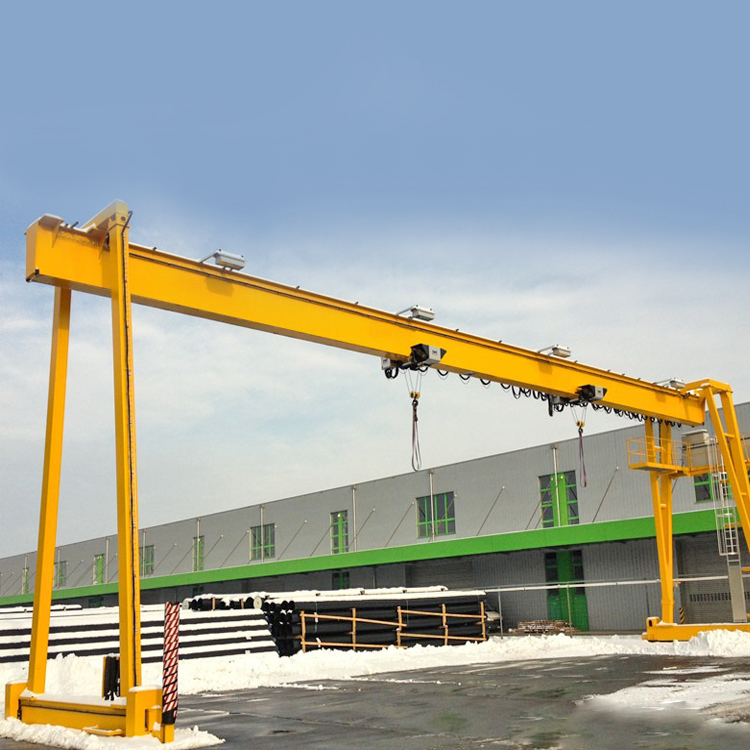A gantry crane is a valuable piece of equipment used in various industries for lifting and moving heavy loads with ease and efficiency. There are different types of gantry cranes, including electric gantry crane, single girder gantry crane, and double girder gantry crane. In this article, we will explore how a gantry crane operates and the differences between the different types.
Firstly, let's understand the basic components of a gantry crane. A gantry crane consists of a bridge, which is the main horizontal beam that spans the area where the heavy loads are lifted and moved. The bridge can either be a single girder or a double girder, depending on the type of crane. Attached to the bridge are the end trucks, which house the wheels on both sides of the beam, allowing the crane to traverse along the gantry rails. The hoist, usually an electric hoist, is suspended from the bridge and is responsible for lifting and lowering the loads.
Now, let's delve into the operation of a gantry crane. The process begins with an operator controlling the crane from a control panel or cabin. The operator ensures that the crane is properly aligned with the load to be lifted. For safety reasons, the operator must ensure that the area beneath the crane is clear of any personnel or obstacles.
Once everything is in place, the operator activates the hoist motor. The motor powers the hoist's drum, and as the drum rotates, the wire rope or chain connected to it starts to unwind. As a result, the hook or lifting attachment, which is attached to the free end of the wire rope, descends and reaches the load to be lifted.
When the hook is positioned securely around the load, the operator activates the motor to lift the load. The motor drives a gear mechanism, which pulls the wire rope or chain, thereby lifting the load off the ground. The gantry crane's design allows it to handle heavy loads, often ranging from a few hundred kilograms to several tons.
After lifting the load, the operator can then horizontally move the gantry crane along the rails using the control panel or cabin controls. The end trucks, equipped with wheels, allow for smooth movement across the gantry rails. This feature is particularly useful when a gantry crane needs to transport a load from one area to another within a facility.
The electric gantry crane, single girder gantry crane, and double girder gantry crane all operate using the same basic principles. However, they differ in terms of load capacity, span, and design. An electric gantry crane is powered by electricity, providing a more reliable and efficient lifting solution compared to traditional gasoline-powered cranes.
A single girder gantry crane has one bridge beam, while a double girder gantry crane has two bridge beams, providing increased stability and load capacity. The choice between these types depends on the specific needs and requirements of the lifting operation.
In conclusion, gantry cranes are versatile and powerful machines used in various industries for lifting and moving heavy loads. Understanding their operation and the differences between types such as electric gantry, single girder, and double girder gantry cranes can help businesses select the most suitable crane for their specific needs. Ultimately, investing in a gantry crane can greatly enhance productivity and efficiency in industrial operations.

